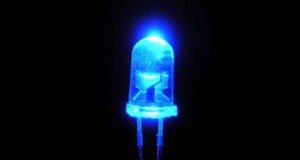One of the best products to be introduced to the aquarium food market in recent years is something that you can barely see. Cyclop-eeze are a microscopic decapod (ten legged) crustacean that have unique nutritional value. Most aquarium hobbyists are familiar with brine shrimp, a staple food for aquarium use for many years. Fish breeders and advanced hobbyists have long used fresh hatched brine shrimp, or nauplii, for raising baby fish, feeding planktivorous fish, filter and particle feeding invertebrates. While brine shrimp are readily available in many forms, and their nauplii are relatively easily raised, they have limited nutritional value, and must be supplemented, enhanced, or fed in large quantities to gain satisfactory nutritional value from feeding them. This is where the emergence of Cyclop-eeze as a viable food source has made a real impact.
Cyclop-eeze can have more than 40 times the omega 3 highly unsaturated fatty acids (HUFA’s) than that of brine shrimp nauplii. Cyclop-eeze also has the highest know levels of Astaxanthene, a critical biological pigment that not only gives the organism a striking red color itself, but when fed to other organisms is a most powerful color enhancer. Research has also shown that the Cyclop-eeze organism has high levels of Betaine, and other natural attractants, which make it irresistible as a food source. The Cyclop-eeze is a truly amazing little crustacean, packing nutrition, color enhancement, and attraction in one powerful little natural package.
The Cyclop-eeze is harvested in a remote arctic saltwater lake that is free of other organisms or pollutants, and in fact remains frozen in winter months. When the ice thaws in spring, natural plankton blooms signal the Cyclop-eeze to hatch and reproduce, which lasts all summer. The adults are harvested at their peak nutrition and instantly frozen to preserve all their goodness.
Cyclop-eeze are available in this frozen form, as well as freeze dried as whole organisms, which can then be used in either form to feed small or baby fish, feeding planktivorous fish, as well as filter and particle feeding invertebrates. Processed Cyclop-eeze is made into flake food and granules for feeding larger fish. Cyclop-eeze extract oils (CEO) are also used as ingredients in a variety of other products as enhancements to other food and pharmaceutical products.
Give them a try; I think that you will be pleasantly surprised with the results that you will see with using this amazing food source.
Until next time,
Dave
 That Fish Blog – Aquarium Advice and Information
That Fish Blog – Aquarium Advice and Information

